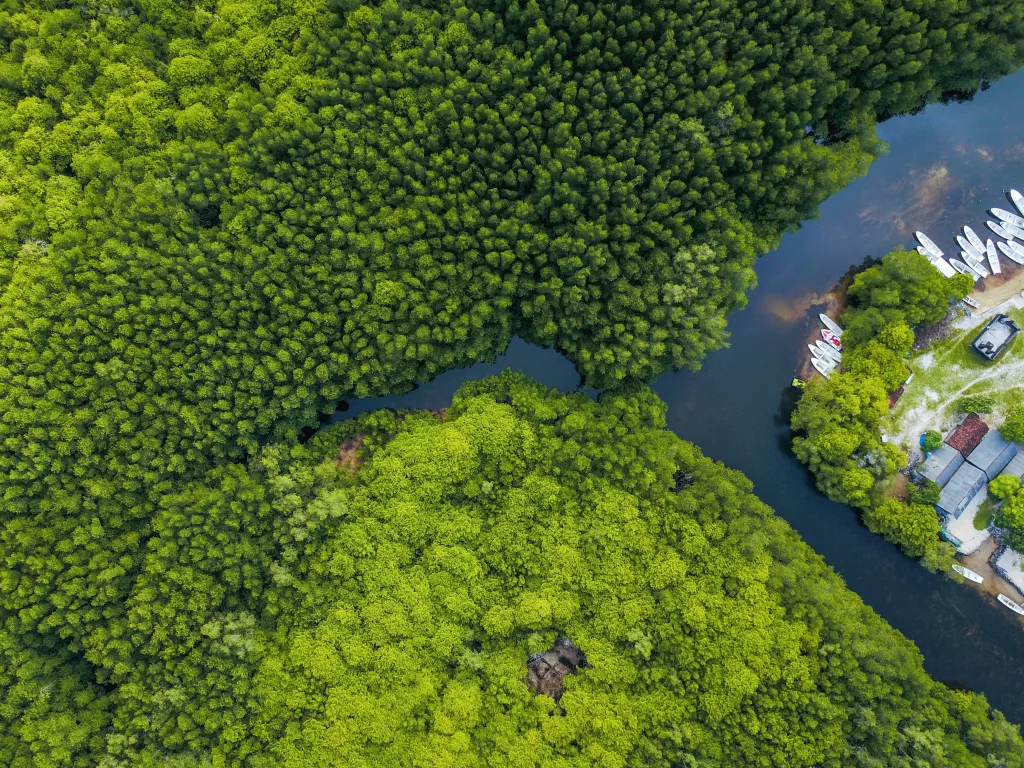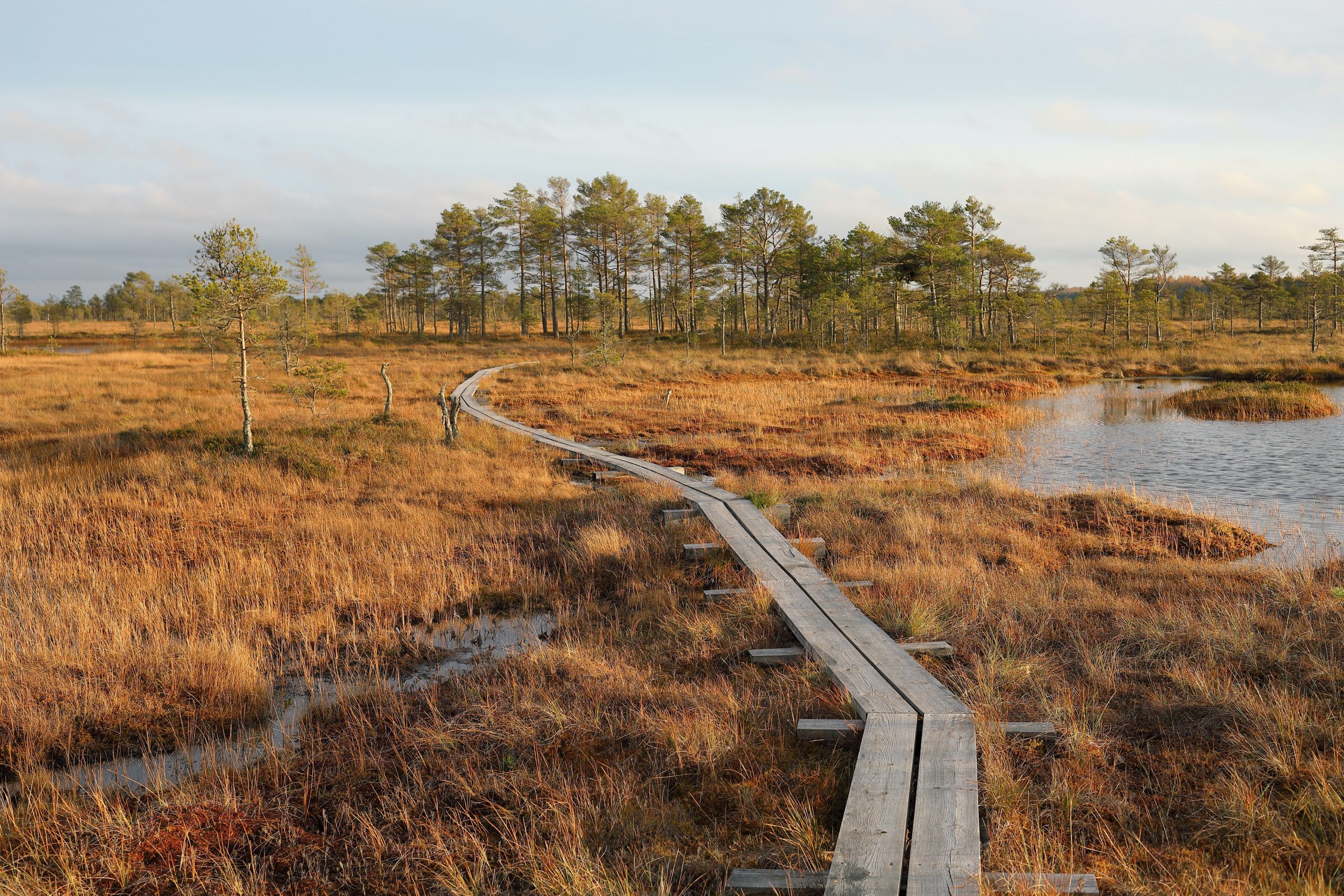
In light of the climate and biodiversity crises, nature-based solutions are gaining prominence as a means to mitigate the effects of climate change and to preserve ecosystems and wildlife populations. But what, exactly, are nature-based solutions, and how do they work? Learn more by reading on...

1
What are nature-based solutions?
Nature-based solutions (NbS) are initiatives to safeguard, sustainably manage, or rehabilitate natural ecosystems that effectively and adaptively address societal issues. These include climate change, natural disasters, human health, and food and water security. Not only do they address these issues, but NbS also enhance both human well-being and biodiversity.
There are two main mechanisms by which nature-based solutions function: Increases in carbon storage, such as from tree planting, or avoidance of greenhouse gas emissions, such as from preventing deforestation. These mechanisms are frequently divided into three major groups:
- Environmental protection and conservation
- Environmental restoration
- Improved land management practices
The goal of environmental protection and conservation is stopping the loss of carbon from soils, forests, or oceans. Examples include stopping deforestation and implementing or extending protected areas.
Environmental restoration of ecosystems entails rehabilitating already-degraded biomes, such as rewetting peatlands and restoring coastal habitats like seagrass meadows and mangroves. It also includes the development of wholly new ecosystems, including extensive tree planting or the creation of artificial wetlands.
Improved land management practices include abandoning industrial farming in favour of more environmentally friendly practices like “agroecology” or agroforestry, using cover crops to increase soil carbon content, and using fewer chemical fertilisers to improve soil health.
Originally, the main goal of NbS was to collaborate with nature in order to preserve biodiversity and adapt to climate change. It has been only recently that the focus of the conversation on nature-based solutions shifted towards using them to slow down climate change (1).

2
Why are nature-based solutions so important?


3
Why are nature-based solutions key in the fight against climate change?
According to predictions, NbS will provide 37%3 of the climate change mitigation needed until 2030 to reach the objective of keeping climate warming below 1.5°C, with expected biodiversity co-benefits. As a result, actions relating to the usage of land are crucial, and so are aggressive efforts to cut greenhouse gas emissions from fossil fuel use and other industrial and agricultural operations.
However, not every planted tree becomes a nature-based solution that promotes biodiversity automatically. For instance, planting trees that are harmful to the area’s wildlife would not promote biodiversity. To overcome this, an evidence-based strategy for monitoring and measuring the outcomes of NbS is essential. This involves continuous monitoring and assessment of the intervention cycle while using local and indigenous knowledge, data, and science.
Now it is clear that we have to consider factors other than climate change when investing in climate projects. It is key to evaluate the additional advantages provided by a solution based on nature. There is no one high-level indicator or global biodiversity target that is equivalent to limiting global warming to 1.5°C over pre-industrial levels in the context of climate change. This is because ecosystems are highly complex and dynamic systems. Project outcomes can be highly localised in nature since biodiversity is valuable and its loss may be permanent.
How Callirus is enabling the nature-based carbon market
NbS have had their issues in the past, with political roadblocks, conflicting interests, and unfocused incentives. At Callirius, we want to regenerate the NbS market and simplify the process by enabling financing for high-integrity and high-impact initiatives.
Callirius is an accessible, transparent, high-integrity and effective marketplace for climate investments. We currently connect project developers from high-impact nature-based climate solutions to large and mid-sized corporate, institutional investors, and buyers for enabling effective climate action. We ensure effectiveness through a science-backed, tech-driven and well-regulated assessment framework, including continuous monitoring and verification.
For further background on key carbon markets terms mentioned in this blog, visit our glossary for an in-depth explanation.
- https://www.sciencedirect.com/science/article/pii/S2772411522000015
- https://ipbes.net/sites/default/files/inline/files/ipbes_global_assessment_report_summary_for_policymakers.pdf
- https://www.worldbank.org/en/topic/disasterriskmanagement/brief/nature-based-solutions-cost-effective-approach-for-disaster-risk-and-water-resource-management



